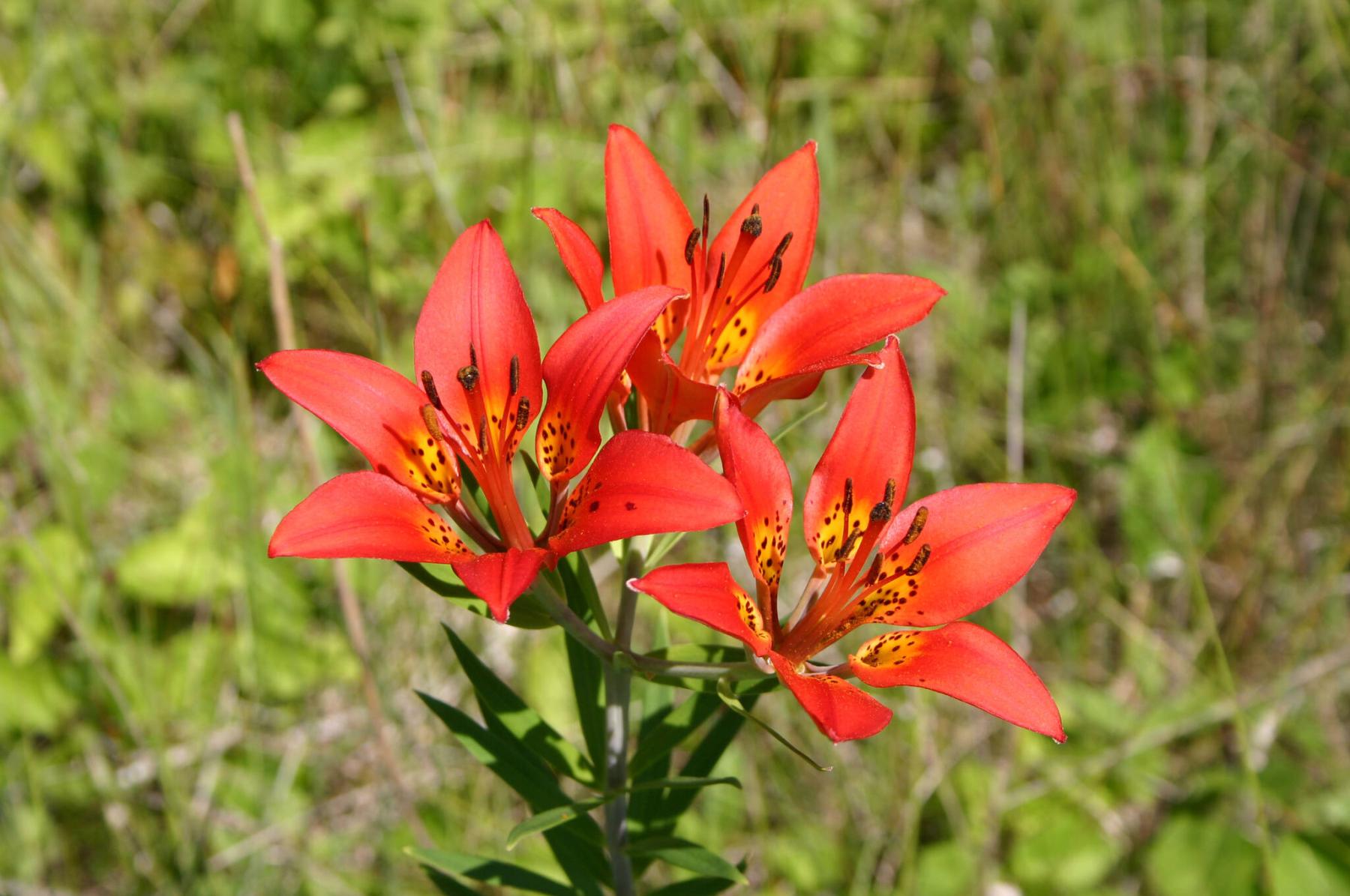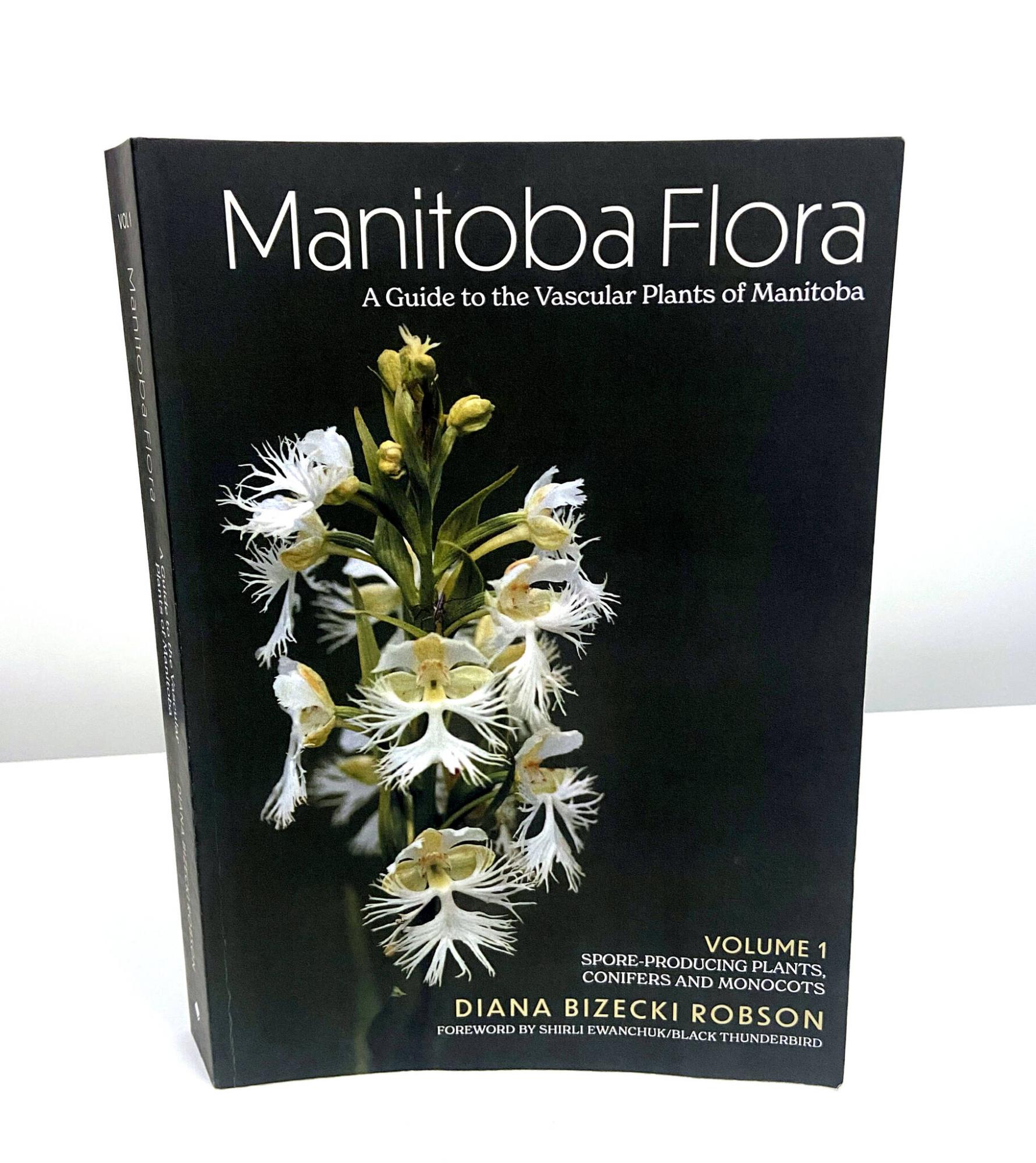
Diana Bizecki Robson photo
In the wild, Cypripedium Lady’s-Slipper requires a vert specific habitat in order to survive.

Diana Bizecki Robson photo
Woodsii, also known as cliff fern, can be found growing on granite outcrops in boreal forests and woodlands in Manitoba.

Diana Bizecki Robson photo
Lilium philadelphicum, commonly known as the wood lily, is one of the many species described in Manitoba Flora.

Friesen Press photo
Author Diana Bizecki Robson’s new book features 614 species of our province’s native plants.
When Diana Bizecki Robson was growing up in Saskatoon during the 1970s, she enjoyed riding her bike to parks and riverbanks where she spent hours studying the diversity of wild plants and their pollinators.
After deciding to become a biologist, Bizecki Robson worked for a few years as an environmental consultant which allowed her to conduct plant surveys. But it was when the opportunity to work at the Manitoba Museum came along — in October 2003 — that she could finally pursue the type of field work and research she loves.
Today, Bizecki Robson is the curator of botany at the Manitoba Museum. She oversees a herbarium which holds over 50,000 specimens.
“One of the things I discovered as part of a collection assessment project that I did when I first got here was that the museum did not have a specimen of every single species of plant or fungus or lichen (from this province) in its collection,” said Bizecki Robson.
“I decided that should be a goal, to try and obtain at least one specimen so we understand the distribution of every single plant in Manitoba.”
Another of Bizecki Robson’s career goals was to write a book on the flora of Manitoba to replace the out-of-date and out-of-print Flora of Manitoba by Homer Scoggan, which was published in 1957.
For the past 22 years, Bizecki Robson’s research has taken her to amazingly diverse ecosystems across our province. In her search for native species, she has trekked on foot through boreal bogs, sand dunes, tall-grass prairie, forests and ditches. She has traversed remote areas with deep deadfall and has painstakingly scoured dense, weedy areas along abandoned railroad tracks. She has also travelled by plane and boat to some of Manitoba’s northernmost spots.
Bizecki Robson’s newly released book, the first of a two-volume series, includes over 300 plant species documented in Manitoba since the publication of Scoggan’s book almost 70 years ago. The book’s full title is Manitoba Flora — A Guide to the Vascular Plants of Manitoba: Volume 1: Spore-producing Plants, Conifers and Monocots (Friesen Press, 2025).
“The big eye-opener for me was when I realized we’d basically been finding two new species a year since the 1950s,” said Bizecki Robson. “I am convinced there are more species growing in Manitoba we don’t even know about. We just need to look.”
Bizecki Robson’s comprehensive guide will be an indispensable resource for experienced botanists, but it is also an easy-to-use guide which will give beginner botanists, gardeners and native-plant enthusiasts the tools they need to identify an unknown plant.
The book includes detailed descriptions and illustrations of spore-producing plants (clubmosses, ferns, horsetails, quillworts and spikemosses) which reproduce using single-celled spores instead of seeds. Cone-producing seed plants such as conifers along with flower-producing monocot plants (orchids, irises, lilies, grasses) are also described. In all, Volume 1 of Manitoba Flora covers 614 plant species in 169 genera and 46 families, and includes identification keys, plant terminology and descriptions, and illustrations.
The introduction to vascular plant terminology at the beginning of the book is a must-read for anyone interested in learning more about the diagnostic characters of plants, including roots, stems, leaf shapes and arrangement, inflorescences, flowers and fruits.
You can learn about woodsia, a genus of small ferns commonly known as cliff ferns, typically found growing on rocky slopes, and the lovely Lilium philadelphicum, commonly known as the wood lily, which grows from a scaly bulb. There is also a fascinating section on native orchid species including Cypripedium Lady’s-Slipper orchids, and so much more.
“I know a lot more people are getting interested in native plants,” said Bizecki Robson. “If you want to grow a native plant, you want to try and match as much as possible the conditions in the natural habitat it grows in.”
Bizecki Robson’s book helps readers understand there are some plants, like the native Lady’s-Slipper orchid, which depend on a symbiotic relationship with certain fungi to survive. “It dies if it doesn’t have the right habitat or is missing that important fungal component. That’s where humility comes in and where not being greedy comes in because we have a responsibility to know that some plants have very specific requirements.”
But sometimes we don’t know what a plant is.
“It might look kind of like something else, but it’s not exactly the same. That’s where this book comes in.”
Can’t we just use a plant-identification app?
“Can you really?” said Bizecki Robson. “Because a database is only as good as what was fed into it. If you are a keen naturalist, a plant-identification app might help you narrow down a plant’s identification but probably the app focuses on the common stuff. Are there other species in that genus that perhaps are not included in the plant app you’re using? Find the genus in the book and actually look at it.”
In the case of grasses and sedges, for example, the diagnostic characters are usually the fruits. “You really need to look at these with a hand lens or under a little microscope in order to see the features.”
Bizecki Robson carries a pocket microscope — the Micro-Brite Plus — wherever she goes. “For some species, you need to know whether the plants have a taproot or a rhizome. Sometimes, you’ve got to look at the leaf hairs,” she says.
One of her favourite places to explore in Manitoba is Spruce Woods Provincial Park. “I love it — I think it’s amazing. CFB Shilo, too, is really crazily diverse from a botanical point of view. There are bits of forest sort of plumped down in the middle of the sand dunes and there are rare plants and little springs where water is coming out of the sand and then you end up with funny little liverwort mossy cool areas in between the dunes.
“But then you get the Interlake species and species in the Hudson Bay Lowlands which are quite different. A lot of my research is focused in southern Manitoba because that’s where some of the rarest species are.”
It’s easy to hear the awe in Bizecki Robson’s voice when she talks about the flora of Manitoba. She hopes her book will inspire readers to explore and discover as well.
“There’s still biodiversity we don’t even know about.” she said. “Take close-up photographs. Record the GPS location. Collect a plant specimen without killing the plant (it’s like cutting off a hair). Press it flat — put your plant between newspaper (pages), sandwich it between pieces of cardboard and place heavy books on top. And if you want to donate it to the museum, that would be great.”
Join Bizecki Robson at the book launch for Manitoba Flora on Nov. 22 at the Manitoba Museum, located at 190 Rupert Ave. The event starts at 2 p.m. in the auditorium and will include remarks by Indigenous Elder Shirli Ewanchuk, who provided the foreword for the book. Paperback editions are available at the Manitoba Museum. E-books and hard copy print-on-demand books can be purchased at friesenpress.com.
colleenizacharias@gmail.com




